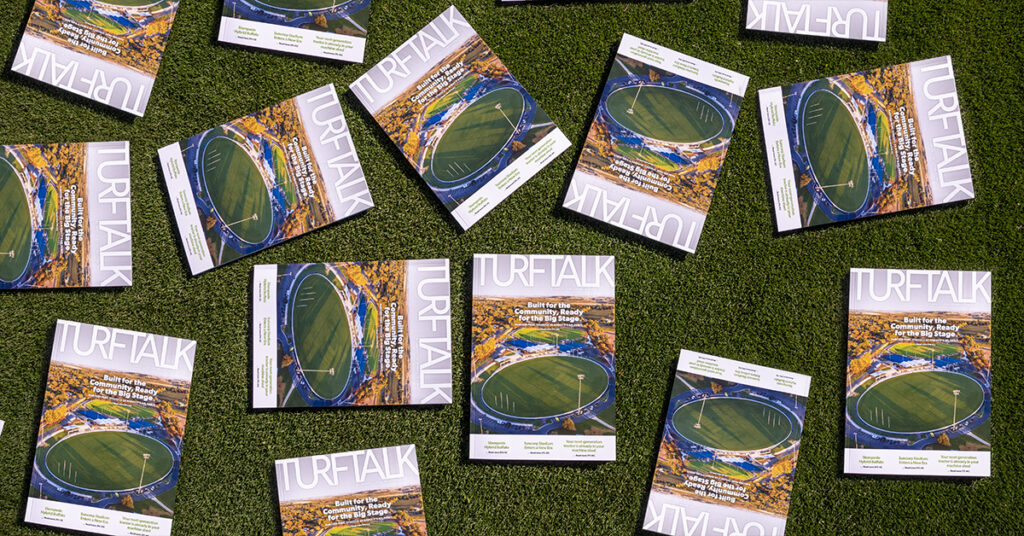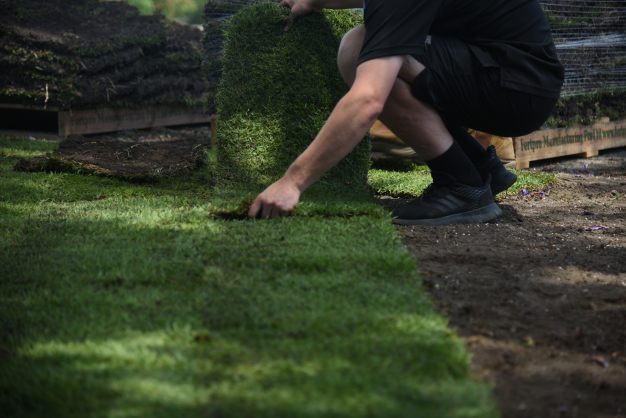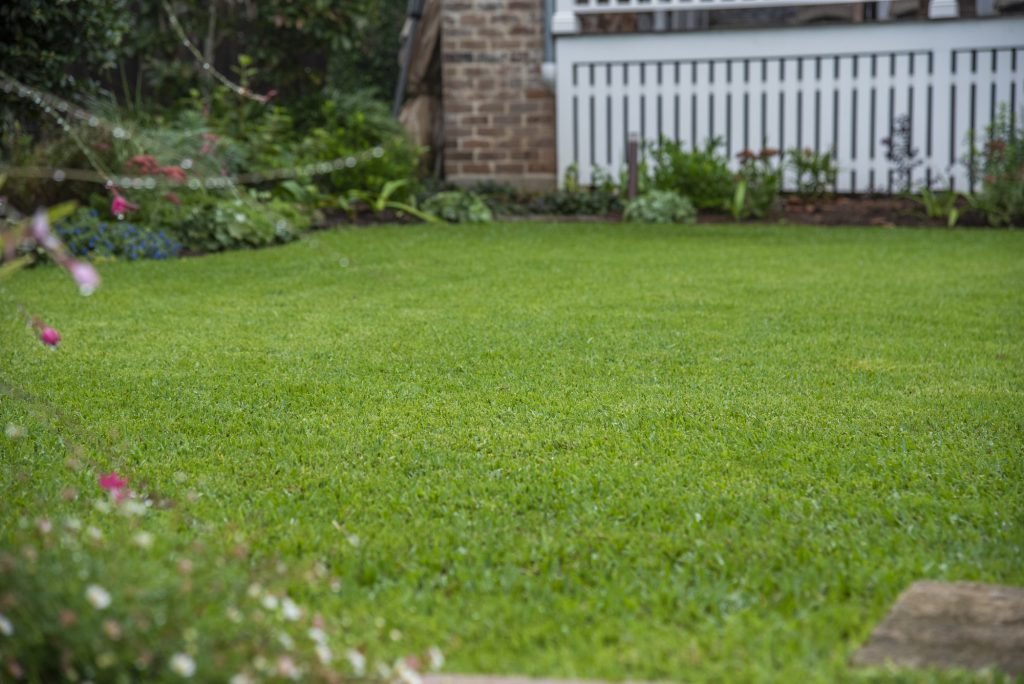What you should your new lawn look like?
Sometimes problem areas can arise in newly laid turf. When you lay new turf its root system has yet to bed into your soil base. It relies on the water you give it. We always advise watering heavily in the initial stages. In this blog we highlight what to look for when your lawn is first laid.
Dry edges and gaps
The most common problem area for new turf are the edges of each slab. Dry edges are a very common sign you are not watering your new turf enough. The edges are the first to dry out, and while the slab may be green in the middle the edges can turn yellow.
If you don’t use this warning sign to water more the problem can escalate. A common outcome of not taking action is gaps between the slabs.
You may have butted up your slabs nice and tight when you put them down, but letting the slabs dry out will cause shrinkage. This can lead to gaps that will eventually require topsoil to fill in. It also makes your lawn susceptible to weeds.
While dry edges are one of the most common new turf problem areas, they are also one of the easiest to deal with. Keep the water up to a strict watering schedule. And remember the simple motto: if in doubt, water more!
For more tips on watering your lawn click here.
Corners the sprinkler doesn’t reach
A less common problem is corners that dry out. Many people use traditional sprinklers, and sometimes there is an area the sprinkler doesn’t reach. Alternatively it can also be an area that gets some water but not as much as other areas.
This can lead to an area drying out horribly like in the photo here. This is a problem area where it is a case of prevention is the best cure. If you let an area get neglected like this it may never come back.
To prevent corners drying out ensure all areas are getting a deep watering. If you are using a traditional circular sprinkler ensure you move it around enough to cover all areas. If you are using a soaker hose or similar ensure there are no areas getting some water, but not a deep watering.
For more tips on watering your lawn click here.
Small pieces cut in
Unless your lawn is a perfect square or rectangle you will end up with odd shaped areas that will require you to cut in smaller pieces of turf. These small pieces are another problem area as they can often struggle and dry out first. Much like the corners, the small pieces really need a preventative approach.
If you have small pieces cut in for certain spaces ensure these get extra water. Pay really close attention to these pieces. If you see any sign of them drying out, no matter how slight, pump in the water. They really need to be closely monitored.
This same tip goes for patches you cut in to replace a hole in an existing lawn. Full slabs are better able to draw in and share water, while the small pieces struggle. If you patch in a small area really pump the water in while it establishes.
Concrete paths and other hard surfaces
The final problem area for new turf is concrete paths and other hard surfaces. Especially with the warmer weather. Concrete paths and hard surfaces can really draw in and hold the heat of the day. This often dries out the soil and turf close to it.
When laying new turf next to concrete paths and hard surfaces it is important to be aware of this and act accordingly. You should water more in areas like this to offset any extra drying out from the residual heat they hold.
By paying close attention to these hard surfaces and the other problem areas, you can prevent many issues from ever arising. As always at the first signs your lawn needs water it is important to get water in quickly to prevent drying out.
If you follow the advice provided when your lawn was delivered you should not have any issues. When in doubt call us here at Turfco on 02 4464 2033 and talk to us for suitable advice. Or you can send us a message here.



